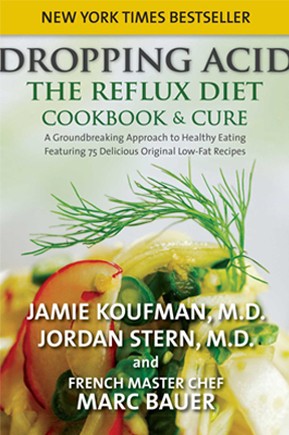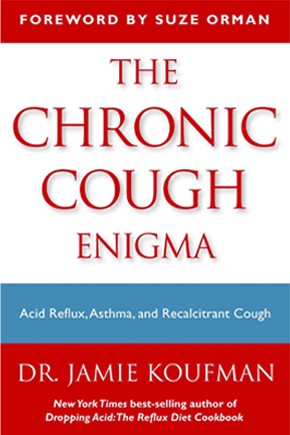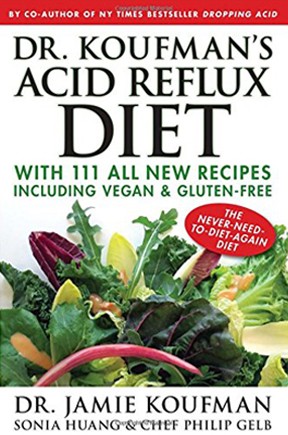At-A-Glance
- Teen reflux often goes unrecognized because symptoms usually affect the throat, voice, sinuses, and breathing—not just heartburn and digestion.
- Common misdiagnoses include asthma, allergies, and anxiety, especially when symptoms like hoarseness, mucus, or shortness of breath are present.
- Lifestyle habits like fast food, late-night eating, acidic carbonated drinks, poor posture, and stress make teens especially vulnerable.
- Reflux symptoms can include throat clearing, post-nasal drip, morning hoarseness, nasal congestion, and even upper abdominal discomfort.
- A 4-week reflux detox with focused lifestyle changes can reverse symptoms and prevent long-term complications.
Join Dr Jamie Koufman on Facebook Live at noon EST on the first Wednesday of each Month. If you miss it live, you can also see it on YouTube.
Acid reflux is often considered an adult problem. But in reality, many teenagers develop reflux—often without realizing it. Modern adolescent life, with its unique mix of lifestyle habits, stressors, and dietary patterns, makes teenagers especially vulnerable to reflux.
What makes it especially tricky to detect in teens is that reflux symptoms rarely look like heartburn. Instead, silent reflux shows up as chronic throat clearing, post-nasal drip, hoarseness, shortness of breath, or difficulty breathing during exercise. These symptoms are frequently misdiagnosed as allergies, asthma, or anxiety.
Whether you’re a parent trying to understand your teen’s persistent complaints, or a teenager wondering why your throat never seems clear, it’s worth exploring reflux as a possible root cause.
What Is Acid Reflux in Teenagers? A Quick Overview
To understand why teens are especially vulnerable, let’s review the underlying causes of reflux.
The stomach contains acid and digestive enzymes that break down food. A muscle called the lower esophageal sphincter (LES) acts like a valve, keeping these contents from escaping into the esophagus or respiratory tract.
One enzyme in particular, pepsin, is especially damaging. It can adhere to the lining of the throat, vocal cords, or airways, lying dormant until reactivated by additional acid exposure—whether from reflux itself or acidic foods and drinks.
Certain foods and beverages cause the LES to relax inappropriately. Fatty and processed foods, nicotine, caffeine, and alcohol are common culprits. Increased abdominal pressure—from overeating, slouched posture, tight clothing, or lying down too soon after eating—can also force the LES open.
Once the LES fails to stay closed, acidic stomach contents can reach airway tissues that aren’t equipped to handle them, leading to irritation, inflammation, and damage over time.
Why Teenagers Are Especially Prone to Acid Reflux
The way reflux develops in the body is the same across all ages—but certain habits and patterns common in teenage life make it much more likely to occur. Teen lifestyles can unintentionally foster reflux by weakening the LES or increasing abdominal pressure on a regular basis.
Consider these common habits:
- Erratic eating patterns – Skipping meals during the day and eating fast food late at night overloads the digestive system.
- Acidic and carbonated drinks – Soda, bottled teas, citrus juice, and energy drinks often have a pH as low as 2–4—the same acidity as stomach acid.
- Poor posture – Hunching over phones or laptops increases pressure on the stomach and weakens the LES.
- High stress and disrupted sleep – Academic pressure, emotional stress, and poor sleep hygiene impair digestion and delay gastric emptying.
Even one of these habits can contribute to reflux. But when several are present—as is often the case—they can create the conditions for reflux to develop quietly and persist over time.
Teen Acid Reflux Symptoms: What to Watch For
One of the challenges with reflux—at any age—is that it often presents without obvious digestive symptoms. This is especially true for teenagers, whose symptoms may be subtle, persistent, and easy to overlook or misinterpret. Rather than heartburn, reflux often affects the throat, airways, or sinuses, leading to complaints that don’t initially seem related to digestion.
In teens, reflux symptoms often show up outside the digestive tract. These are some of the key signs to watch for:
- Frequent throat clearing, especially in the morning and after meals
- Chronic cough that doesn’t respond to treatment
- Post-nasal drip or too much mucus that won’t go away
- Hoarseness, especially in the morning — a strong indicator of respiratory reflux
- Breathing discomfort, often described as tightness or trouble getting air in
- A sensation of a lump in the throat (globus)
- Difficulty swallowing, bloating, or frequent burping
- Nasal congestion that lingers despite allergy medications
- Intermittent abdominal pain, particularly if accompanied by upper GI symptoms
Note: Morning hoarseness is one of the clearest signs of silent nighttime respiratory reflux (SNORR)—a type of reflux that occurs while lying down and often goes unnoticed.
Many of these symptoms are mistaken for other issues like dehydration, fatigue, and seasonal allergies. In reality, they often reflect inflammation caused by stomach acid and digestive enzymes reaching delicate tissues beyond the stomach.
Reflux can also involve digestive symptoms like bloating, frequent burping, or intermittent upper abdominal discomfort—often overlooked but part of the same underlying condition.
Why Acid Reflux in Teenagers Is Often Misdiagnosed
Because reflux often presents without digestive symptoms—especially in teens—it’s frequently mistaken for other conditions. Persistent throat or airway issues are commonly attributed to asthma, allergies, or anxiety, which can delay proper diagnosis and treatment.
Here’s how reflux symptoms can mimic these conditions—and how to tell them apart:
- Asthma – Teens with reflux-related airway inflammation may be diagnosed with asthma when the real issue lies in the upper airway. A key clue: reflux-related breathing difficulty is often worse during inhalation, not exhalation. Inhalers may offer little or no relief in these cases.
- Allergies – Mucus caused by reflux tends to be thick, constant, and unresponsive to antihistamines—unlike allergy-related mucus, which is typically thin, seasonal, and improves with treatment.
- Anxiety – While stress can worsen reflux, chest tightness, throat constriction, or difficulty breathing may stem from physical inflammation, not just emotional triggers.
If typical treatments aren’t working, asking a few simple questions can point toward reflux as the underlying cause:
- Is breathing harder when inhaling?
- Is the mucus thick and persistent despite allergy medication?
- Does hoarseness improve as the day goes on?
- Do symptoms worsen after eating or lying down?
If the answer to several of these is yes, it’s worth discussing respiratory reflux with your doctor—and asking for a referral to an ENT (ear, nose, and throat specialist). A full throat exam using a flexible scope is often necessary to confirm the diagnosis, as a mirror exam alone may miss signs of respiratory reflux.
How to Treat Teen Acid Reflux with Lifestyle Changes
The good news: reflux is often reversible with consistent lifestyle changes. A focused reset—known as a reflux detox—helps reduce inflammation, soothe irritated tissues, and give the body a chance to heal.
For teens with reflux, a full 4-week commitment is essential. Taking this period seriously—not just making occasional changes—can support healing and help prevent long-term complications.
Here are the core steps:
- Food timing – Stop eating at least 3–4 hours before bed. This gives the stomach time to empty and reduces the risk of nighttime reflux.
- Dietary changes – Eliminate acidic drinks like soda, energy drinks, citrus juices, and bottled teas. Cut back on greasy or processed foods, especially in the evening, when digestion slows.
- Postural adjustments – Sit upright while eating, and avoid slouching over screens afterward. During flare-ups, sleeping on an incline—using a wedge pillow or a recliner—can reduce nighttime reflux.
- Avoid high-acid beverages – Most carbonated and bottled drinks have a pH between 2 and 4—the same acidity as stomach acid—which can reactivate pepsin and irritate the airway. Even “healthy” bottled teas or juices can trigger symptoms.
For teens with moderate to severe symptoms, this type of structured approach can make a dramatic difference—not just in symptom relief, but in long-term health.
And one more tip: a cheeseburger with fries and a soda late at night is one of the most reflux-triggering combinations. If you want to avoid reflux, skip the “triple threat.”
Why Treating Acid Reflux in Teens Early Really Matters
Many teenagers with reflux will carry it into adulthood—often without ever receiving a diagnosis. Over time, chronic reflux can lead to more serious complications, including sleep apnea, vocal cord damage, and chronic sinus infections, among other respiratory issues.
Catching it early gives teens the chance to reset. By removing triggers and reducing inflammation, they can start healing now and lower the risk of long-term health problems.
And for teens who’ve been dismissed or frustrated by symptoms that don’t seem to make sense, discovering that reflux is the missing link can be a turning point—offering both a clear explanation and a real path to healing.
Reflux doesn’t go away on its own—but it can improve with real, focused effort. Recognizing the signs is the first step toward meaningful, lasting change.
For more information about diagnosis and treatment of acid reflux, see two companion books on Amazon: Dr. Koufman’s Acid Reflux Diet and Dropping Acid: The Reflux Diet Cookbook & Cure. If you would like to receive personalized guidance and strategies for lasting relief, consider scheduling an online consultation.









